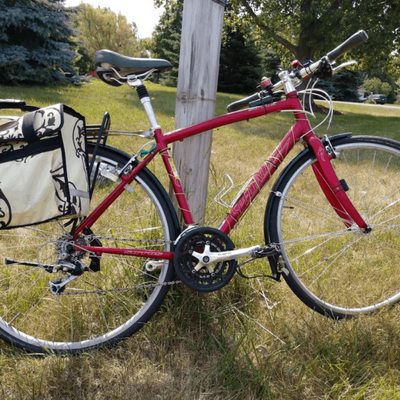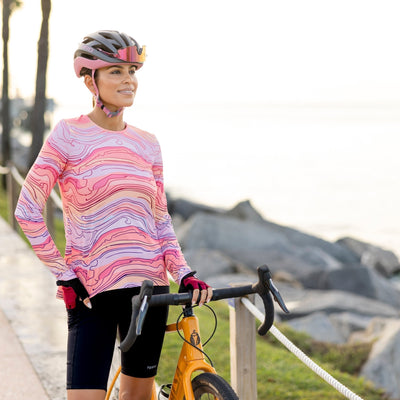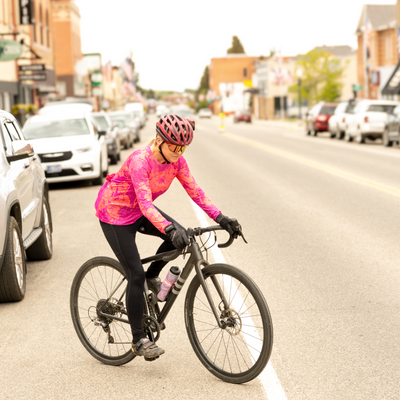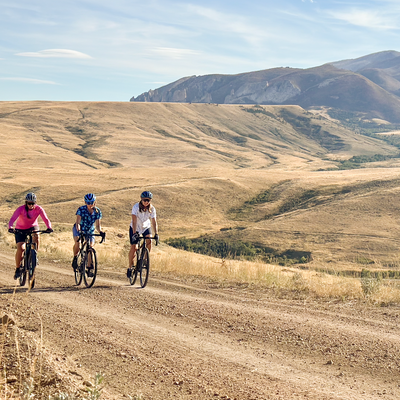
Where Have All the Women’s Bikes Gone?
Based on a quick review of bike manufacturers’ websites, women’s bikes don’t seem to have gone anywhere, but a little probing shows the industry might to be in retrograde mode. Having made so much progress in the last 25 years, it would be a shame to lose sight of the goal: bountiful offerings for all riders. Although there are more choices than ever for female cyclists, the true distinctions between those bikes and unisex bikes are disappearing quickly.
Last month, Bicycling magazine’s annual Buyer’s Guide hit the news stands and for the first time in years, there was no mention of women’s bikes. Poof! Gone with the wind! I haven’t been able to find the reason for this -- so far, all Bicycling will say is women’s bikes will be covered in their Editor’s Choice and in individual bike reviews. Gone, but not forgotten. Now, add to this the fact that, with the notable exception of Specialized, in the past most smaller women’s bikes have offered 650c wheel sizes to fit the rider properly. (At Terry, we go a step further with not only 650c and 700c, but 24” wheels as well.) But recently, 650c has been disappearing from the lineup faster than real sugar in soft drinks.
No more 650c for Cannondale, Trek, Orbea or Fuji to name just a few. So what’s going on??? I spoke to some manufacturers -- those who continue to carry 650c and those who have dropped them. They all told me the same thing. 650c wheels are a must-have for a properly built small bicycle. But there is mounting pressure to build small bikes with 700c wheels. Some told me the consumer herself is driving this change. Apparently there are quite a few women who would prefer to ride an ill-fitting bike with 700c wheels than a properly-fitting 650c bicycle. This may be driven by hesitancy about the availability of 650c or the need to conform.
Others think the “push back” is from those dealers who don’t really understand how a 650c wheel makes a difference in bike fit and choose to stay in the 700c comfort zone rather than educate the consumer. Once a manufacturer has decided to embrace 700c wheels exclusively, just how will women’s bikes be differentiated from “unisex” bikes? Expect to see a lot more of this: “...a shorter crank and stem length, along with narrower handlebars, give it a women-specific fit”. Gee, that’s just what we did in the good old days of unisex! I can guarantee you that women on the tail of the bell curve, i.e. those very petite women are in for a rough time of it. As 700c returns, stand over heights are rising. Are manufacturers really reading the market correctly? Is there indeed a trade-off between the desire for a properly fitting bicycle and wheel size? What say you, dear reader?
Tags:
24 Comments
Ann "Spike" Toler
I’m now apprenticing as a mechanic at a bike shop, and while the guys that work there are great, and much more up-to-speed on the best technology and fit than most shops, they have still tried to tell me that I would fit just a well on a mens bike if I had a good bike fitter. To there credit, once I explain the differences in a men and womens’ bike, as well as the proportional difference in our legs and torso, they understand, but these men work at a bike shop? Selling bikes? To womem? and since most women don’t know what they need (as I didn’t when I first started to ride) they rely on an “educated professional” that works at a bike shop to advise them. It appears to me that the fist line of defense is the bike shops, and unless or until they are truly educated across the board they will continue to sell what they know, and what they think will work based on their knowledge (albeit only of mens bikes).
Margaret Gutgesell
I love my 650c=wheeled bike. I’m 150 cm (4’11") with short legs. Yes, I have short cranks and a compact chain ring. I’ve had the bike for greater than 10 years. If it ever ‘dies,’ I’m not sure what I will do.
Jean
I’m all for bike manufacturers to provide enough bikes with different geometries that are beyond the normal male 5’6"-6’ height (but they have different leg, torso and arm lengths).
Sometimes, it helps to remember that not all women can afford Terry bikes or bikes above $500.00CAN. It’s just reality.
Jean also @ http://www.velo-city2012blog.com
Susan Hayse
This is really disappointing, but not unexpected. It’s all about what’s the most profitable. Thank you, Georgena, for continuing to make bikes that actually fit small riders, whether female or male.
Leave a comment
Your email address will not be published. Required fields are marked with *








Kathy Sherman
Well heck! I’ve noticed this for a long time now. I’m a training ride leader for the Aids Lifecycle SF to LA ride and so many of my lady riders are just not on a frame that fits them (Specialized is the exception).
I’m tall, long legged, with a really short torso and reach. Not only is a woman’s specific frame necessary for me but my last 2 bikes had to be make custom because those pesky top tubes just stress out my back!I hope that Trek and Orbea keep making frames for smaller riders and short top tubes for their taller sisters!